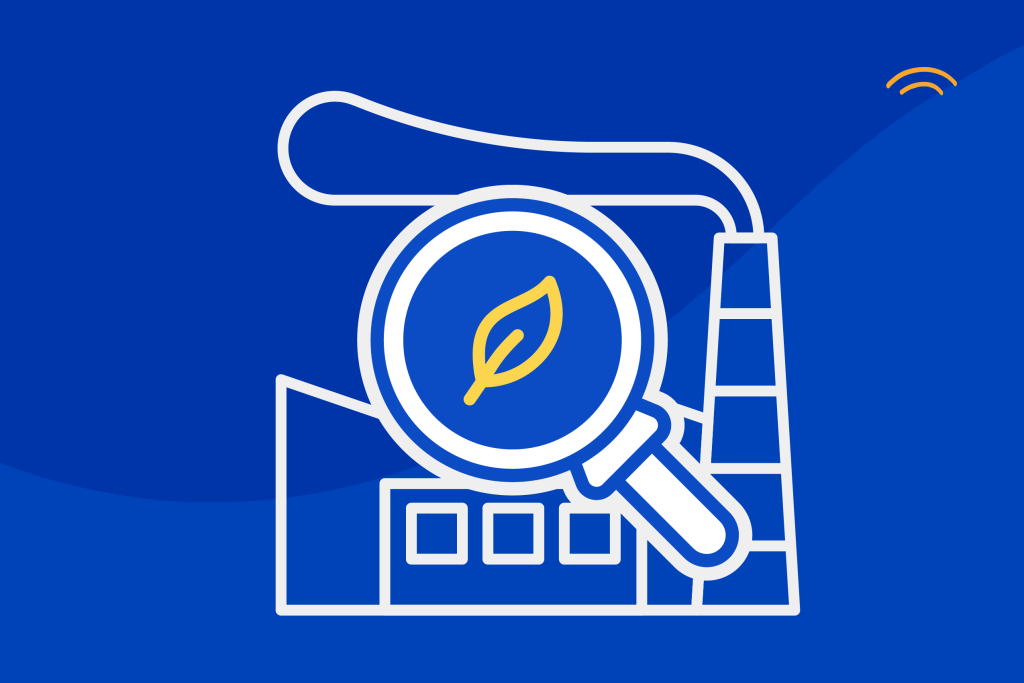
More detailed sustainability reporting is about to become mandatory for large businesses in the EU. Is your company ready to report its climate and environmental impact?
The new Corporate Sustainability Reporting Directive (CSRD) rules start to come into effect in 2024. Their aim is to make sure that businesses provide transparent, standardised information about their sustainability impact, so that consumers and investors can make more responsible purchasing and investment decisions.
Companies must ensure timely, accurate, and comprehensive sustainability reporting. If you submit an inaccurate report, or your analysis isn’t comprehensive enough, you run the risk of incurring significant financial penalties.
Read on to learn more about the five key CSRD facts you need to know.
1. Why the Corporate Sustainability Reporting Directive matters
The CSRD improves upon the previous Non-Financial Reporting Directive (NFRD), which failed to compel businesses to provide fully detailed, standardised sustainability reports.
The resultant low-quality sustainability reporting led to a lack of trust from consumers and investors, who were left with no easy way to compare different companies’ sustainability claims.
“High quality and reliable public reporting by companies will help create a culture of greater public accountability.”
The European Commission
The CSRD aims to improve companies’ sustainability disclosure, so that they provide consumers and investors with transparent data that they can rely on to assess how sustainable companies really are.
2. What the CSRD requires companies to report
The new CSRD legislation applies to EU companies with a net turnover of over €50 million, with €25 million in assets, and 250 or more employees. Companies based outside the EU that have a turnover of over €150 million within the EU will also have to comply.
These companies will have to report on their sustainability impacts, opportunities, and risks, according to twelve general, environmental, social and governance standards defined by the European Sustainability Reporting Standards (ESRS).
These standards include climate, pollution, water and marine resources, biodiversity and ecosystems, resource use and circular economy, own workforce, workers in the value chain, affected communities, consumers and end users, and business conduct.
Your sustainability reporting process also must include a double materiality assessment, which covers both impact materiality — how your company impacts society and the environment, and financial materiality — the potential financial impact on your company of sustainability-related developments.
For example, if a fashion company decides to switch to organic cotton and implement fair labour practices, it would positively impact both its financial materiality (e.g. by improving soil health, which means the land can be used to grow cotton for a longer period of time, and also by reducing reputational risks) and its environmental and social materiality (by reducing pesticide use, improving soil health, and ensuring better working conditions for farmers and factory workers).
The CSRD also requires all data to be submitted in a standardised digital format to make it possible for consumers and investors to easily compare compliance between companies.
3. CSRD benefits to brands and retailers
If you’re thinking that this sounds like a lot of work, you’re right. But the good news is that these obligations can also create considerable benefits and opportunities for your company.
Benefits like improving your brand image and reputation, by demonstrating your commitment to social and environmental responsibility. This builds trust with consumers who are increasingly looking for sustainable and ethical products. Consumers are also more likely to remain loyal to brands that align with their values.
Adopting sustainable practices is also an increasingly advantageous way of differentiating your brand in the market, providing a unique selling point that attracts environmentally- and socially-conscious consumers.
As well as these commercial advantages, there are also long-term sustainability benefits to consider. Contributing to environmental conservation and sustainable practices ensures the long-term availability of resources, securing your brand’s future. And engaging in socially responsible initiatives contributes to the well-being of communities, fostering long-term positive relationships.
On top of these three main benefits, successfully implementing CSRD initiatives can also deliver other value propositions, like cost savings and efficiency, access to new markets, risk mitigation, and employee engagement and productivity.
4. How to implement the CSRD in your business
A good CSRD implementation strategy starts at the top. It’s critical for brands and retailers to demonstrate leadership commitment in the form of board oversight and policy development.
Establishing a governance structure that includes board oversight of corporate sustainability reporting and other sustainability initiatives sends a clear message that the business is taking sustainability seriously. This is then underlined by developing and adopting formal policies that outline the company’s commitment to CSR and sustainability.
Stakeholder engagement is as important as leadership. First you’ll need to identify and prioritise key stakeholders, including customers, employees, investors, suppliers, and the local community. Then develop strategies to engage with them and gather their input on sustainability initiatives.
Having talked the talk, it’s time to walk the walk. Integrating CSR into your business processes is where the work really gets done. Examples that address environmental impacts include implementing measures to improve energy efficiency, minimise waste generation and promote recycling. For social impacts, examples include establishing a code of conduct that defines ethical behaviour and compliance standards, and implementing programs to ensure adherence to legal and regulatory requirements.
Finally you’ll need to perform regular assessments and audits, for example assessing and monitoring the sustainability performance of suppliers and promoting responsible sourcing practices throughout your supply chain. Here’s where sustainability intelligence software can really help you improve speed and accuracy by automating impact scoring calculations.
5. How to measure and report CSRD achievements
Your company needs to measure its CSRD achievements and report them transparently.
Dayrize can help simplify this compliance process via its integrated sustainability intelligence platform.
The automated system covers data ingestion and transformation to ensure that your sustainability data is accurate and comprehensive, as well as assessment and scoring of your sustainability performance, aligned with ESRS reporting standards.
“Dayrize’s Sustainability Intelligence software offers a comprehensive perspective, encompassing Circular Economy, Climate Impact, Ecosystem Impact, Livelihoods & Wellbeing, and Purpose. This all-encompassing evaluation distinguishes Dayrize by providing a complete sustainability score that aligns with the internationally acknowledged standards, including topics covered by ESRS.”
Bart Nollen
Co-Founder
Dayrize
Beyond compliance, Dayrize also provides actionable insights to guide your company to model product changes and understand the subsequent impact across your product range.
Your company’s sustainability intelligence is accessible via a single intuitive interface, allowing you to easily create transparent sustainability reports that meet CSRD reporting requirements. And when the CSR regulations evolve, the platform will adapt too, helping your company remain compliant without significant disruption.
How Dayrize can help your CSRD program
Dayrize’s Sustainability Intelligence software delivers holistic sustainability intelligence, data accuracy and quality, and actionable insights.
The detailed product-level analysis our platform provides is critical for meeting CSRD reporting requirements, offering granular insights into the sustainability impacts of each product.
It also helps you pinpoint areas for improvement, identifying hotspots in product design, manufacturing, and supply chain management, and leading to more sustainable business practices.
And its interactive dashboard simplifies reporting, so you can provide transparent information based on accurate product-level data, strengthening your credibility with stakeholders, including customers, investors, and regulatory bodies.
Subscribe to Dayrize updates to learn more from leaders in sustainability for businesses.

